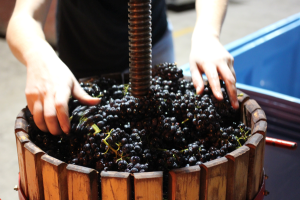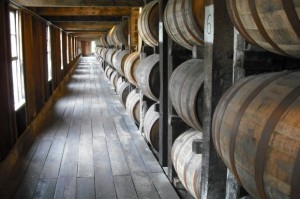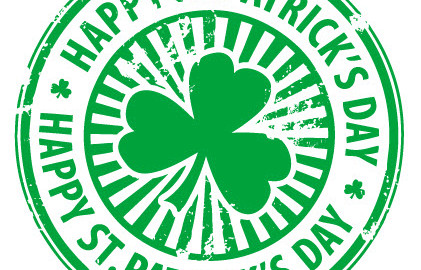Since this week is Saint Patrick’s Day, I thought what better topic than the creation of alcohol for this week’s post. I’ve been making beer for about 4 years and there are hundreds if not thousands of books on the subject not to mention blogs that specialize in it, magazines, news groups, local and national societies, and a lot of competitions. The purpose of this article isn’t to make you a brew-master, but to give you the basic knowledge to brew beer or wine or distill spirits as a means of trade in a post SHTF society. First a disclaimer… the distillation of spirits in the United States is illegal without a license. However, beer and wine can be made without a license for personal consumption. Laws governing beer and wine production vary by state and if interested, you should find out the laws for your specific state.
When making alcoholic beverages, you need to start with a fermentable base. For beer, generally use a barley or barley/wheat base;  for wine, a fruit base; mead, use honey and for spirits use vegetables. There are hundreds of recipes available on the internet for free, so it’s beyond the scope of this article to act as a recipe, but more as a blueprint.
for wine, a fruit base; mead, use honey and for spirits use vegetables. There are hundreds of recipes available on the internet for free, so it’s beyond the scope of this article to act as a recipe, but more as a blueprint.
When beginning your beer brew, the starch must be removed from the base. If you are using grain it must be malted and cracked. It is then soaked in hot (175-180 degree) water to release the sugar. Use 1 quart of water for each pound of grain, adding the grain to the water will cool it to about 150-155 degrees and that temperature should be maintained for an hour. The water should be collected in your boil pot, the grain should then be sparged or rinsed with 170 degree water to collect any remaining sugar. The previous steps can be forgone if you use a malt extract instead of the all-grain. Boil the resulting liquid for an hour adding hops at different times depending on your recipe. Following the boil, cool the liquid (wort) below 80 degrees as quickly as possible. The wort is susceptible to contamination below 180 degrees so great care must be taken until the yeast has taken hold.  The wort will kill the yeast if it is too hot when it is pitched and should be under 80 degrees when this happens. After pitching the yeast the wort is sealed in an airtight fermenting container that has a one-way vent. As the yeast eats the sugar the byproducts are alcohol and carbon dioxide, if the fermenter isn’t vented it will pop and could explode. It should be stored in a dark cool closet for 2 to 3 weeks while it ferments. Use about 4 ounces of corn sugar in about a cup of boiling water for 5 gallons of beer, combine in a bottling bucket and pour into bottles and cap with oxygen absorbing bottle caps. After 2-3 weeks your beer is ready to drink.
The wort will kill the yeast if it is too hot when it is pitched and should be under 80 degrees when this happens. After pitching the yeast the wort is sealed in an airtight fermenting container that has a one-way vent. As the yeast eats the sugar the byproducts are alcohol and carbon dioxide, if the fermenter isn’t vented it will pop and could explode. It should be stored in a dark cool closet for 2 to 3 weeks while it ferments. Use about 4 ounces of corn sugar in about a cup of boiling water for 5 gallons of beer, combine in a bottling bucket and pour into bottles and cap with oxygen absorbing bottle caps. After 2-3 weeks your beer is ready to drink.
When making wine, you generally use grapes, like with beer you generally use barley. Red wine is made with the pulp and skin of the grape resulting in the red color. White wine is made from the juice from the grape.  A stronger strain of yeast is required to withstand the higher alcohol content of wine. It is then fermented for 10 days to a month or more. Fermentation will continue until all the sugar is gone resulting in a dry wine. Many home brewers either use sodium bisulfate to try and stop the fermentation process for a sweeter wine, or let it finish fermenting and then use potassium sorbate and add a sugar solution to sweeten it.
A stronger strain of yeast is required to withstand the higher alcohol content of wine. It is then fermented for 10 days to a month or more. Fermentation will continue until all the sugar is gone resulting in a dry wine. Many home brewers either use sodium bisulfate to try and stop the fermentation process for a sweeter wine, or let it finish fermenting and then use potassium sorbate and add a sugar solution to sweeten it.
Making liquor or spirits, the fermentation process Is basically the same as beer or wine, what sets it apart is the distilling process. As the mash ferments it becomes a wash at 10-12% ethanol, it is then moved into the pot where it is heated to boiling. The boiling point f or ethanol is 172 degrees while the boiling point for water is 212 degrees. The combined water and alcohol vapor rises into the distillation column, at the top of the distillation column is the lyne arm. The secret to the lyne arm is heat, too much heat and there will be excess water vapor, but not enough heat and there won’t be quality alcohol vapors. The lyne arm is attached to the condensation coil where the alcohol vapor condenses into your distillate and collects in the collecting vessel. The first 5% of the run is called the foreshots or the heads and contains large amounts of volatile chemicals such as ethers and acetone.
or ethanol is 172 degrees while the boiling point for water is 212 degrees. The combined water and alcohol vapor rises into the distillation column, at the top of the distillation column is the lyne arm. The secret to the lyne arm is heat, too much heat and there will be excess water vapor, but not enough heat and there won’t be quality alcohol vapors. The lyne arm is attached to the condensation coil where the alcohol vapor condenses into your distillate and collects in the collecting vessel. The first 5% of the run is called the foreshots or the heads and contains large amounts of volatile chemicals such as ethers and acetone. Next comes the hearts, where the high alcohol content is located, last is the tails that is low in alcohol content and is generally set aside and redistilled later. The hearts are combined with some of the heads, diluted and aged for the final product. Before aging it is colorless and considered moonshine, however it’s harsh tasting, but aging in a wooden cask will mellow the taste and darken the color.
Next comes the hearts, where the high alcohol content is located, last is the tails that is low in alcohol content and is generally set aside and redistilled later. The hearts are combined with some of the heads, diluted and aged for the final product. Before aging it is colorless and considered moonshine, however it’s harsh tasting, but aging in a wooden cask will mellow the taste and darken the color.
